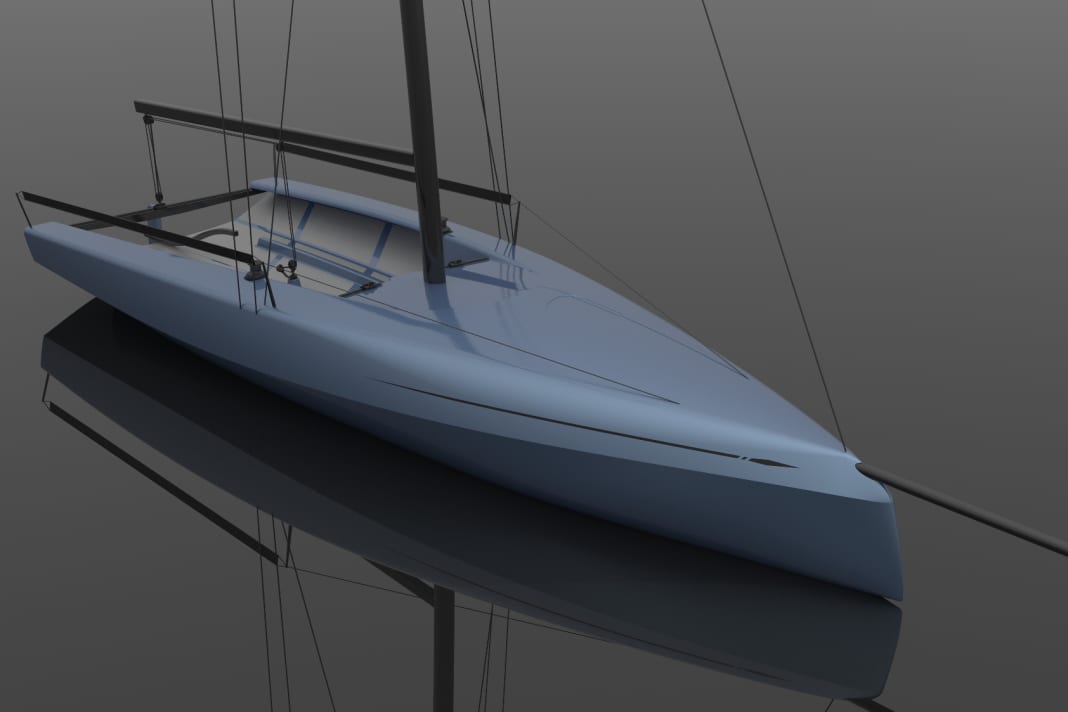





The project was probably initiated by Leonardo Ferragamo, President of Nautor Swan and himself an active and extremely successful regatta sailor. Ferragamo, who still travels a lot with his own Flying Dutchman (FD), apparently approached his developers with the desire to develop a kind of modern version of an FD. It is to be a super-powerful keelboat with ample sail area, easy handling and trailerable.
It is aimed at young and young-at-heart sailors who want to actively sail in an exciting one-design class, but at the same time want to do without the extensive effort (large team, lots of organisation, high costs). The project is supported by Federico Michetti, who as Sports Director at Nautor Swan is responsible for setting up and developing the entire ClubSwan programme. As an experienced regatta sailor and multiple world champion in the Melges 20, Melges 24 and Melges 32 classes (among others), Michetti brings together a wealth of experience in the field of one-design racing and smaller sports boats.
As with all current models in the ClubSwan range, the design of the small ClubSwan 28 comes from the studio of Argentinian Juan Kouyoumdjian (Juan K Yacht Design). The concept is for the boat to be sailed by a crew of four, who sit on the high edge with their legs in the cockpit. This means that extreme "hiking", such as in the Melges 24 class, will not be possible. Instead, all four co-sailors should also work actively on the cross to make the boat fast.
Simple, lightweight, trailerable
The mast is made of carbon fibre and will be super-flexible with two spreaders, very similar to the rig of a 49er. However, there will be no backstay, but a hydraulic mast jack will ensure plenty of steam on the shrouds and therefore little sag from the forestay. The correct rig tension will be essential for the performance of this mast concept and will also have to be trimmed permanently. A fully battened mainsail with square top and a short overlapping genoa with 3D hoist point adjustments on deck are planned for this purpose. The 75-square-metre gennaker is attached to an extendable carbon fibre bowsprit that is over two metres long.
The calculated total weight (ready to sail) will be around one tonne. With a width of 2.50 metres, the boat is therefore very easy to trailer. The L-shaped keel with ballast bomb can be raised as a lifting keel, simply via a multiple bulkhead buoy. And the rudder blade is attached to the stern and can be easily removed. This means that the boat sits low on the trailer, which is advantageous for transport on the road and for assembly on land (see view in the gallery above). What's more, the lightweight carbon rig is on deck and can be easily positioned and laid by hand.
The hull and deck are to be manufactured as simple GRP sandwich constructions using a vacuum infusion process, probably with epoxy resin, although this has not yet been confirmed. Where the boat will ultimately be built has apparently not yet been finalised either; the project management is still negotiating with potential partners. At least not at the shipyard in Pietarsaari Finland, that much is known. Project manager Federico Michetti holds out the prospect of the prototype being completed and ready for initial tests with the shipyard as early as January 2024. At least ten ClubSwan 28 boats should be sailing by the summer. And the first international regatta series is already planned for 2024.
The price for which the ClubSwan 28 will ultimately be launched on the market has also not yet been finalised and is therefore not yet suitable for communication.
Technical data ClubSwan 28
- Designer: Juan K Yacht Design
- Hull length: 8.50 m
- Overall length (with bowsprit): 10,70 m
- Width: 2.50 m
- Draught: 1.80 m
- Calculated weight: approx. 1.0 tonnes
- Mainsail: 35.0 m²
- Jib: 20.0 m²
- Gennaker: 75,0 m²

